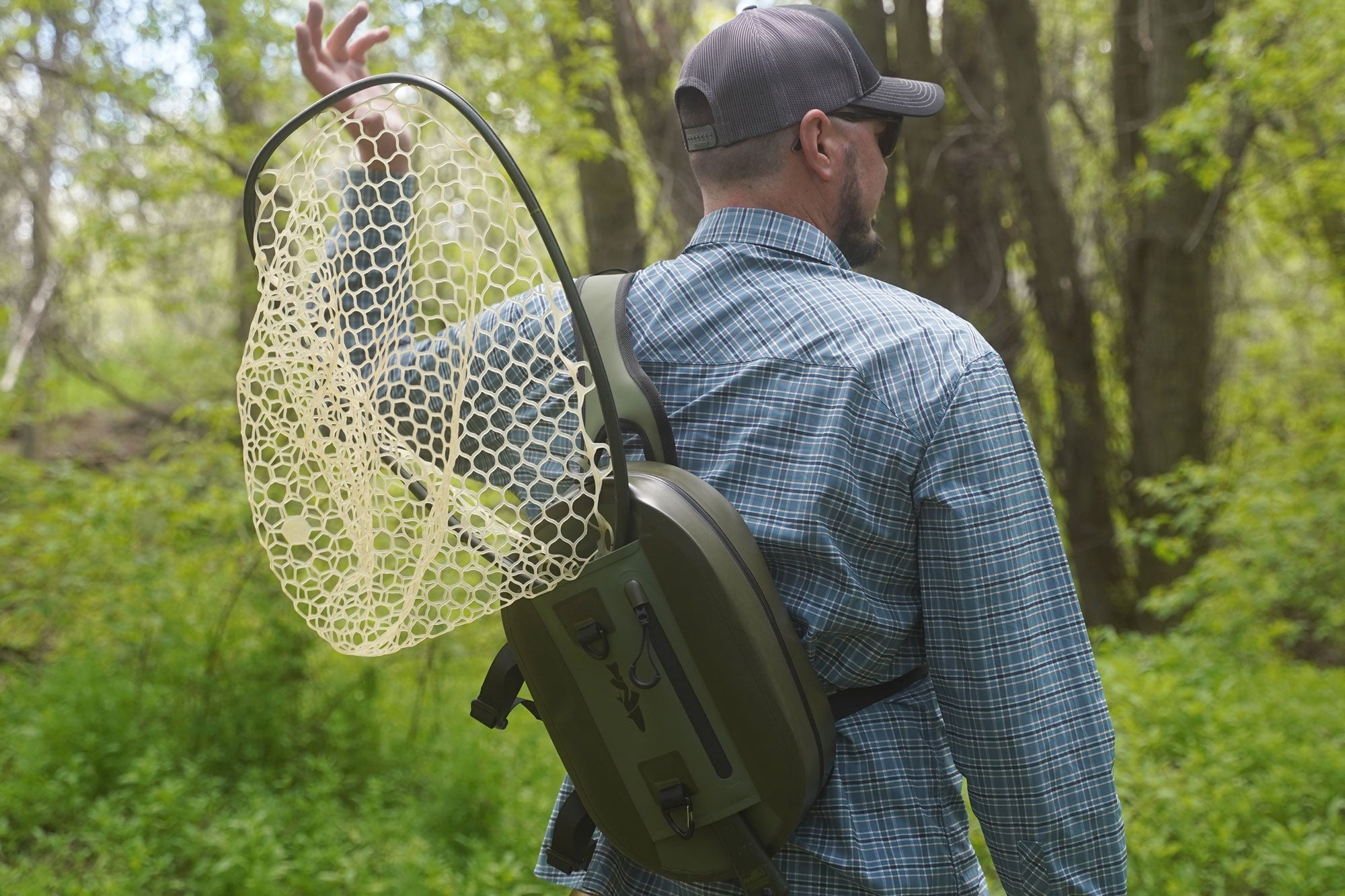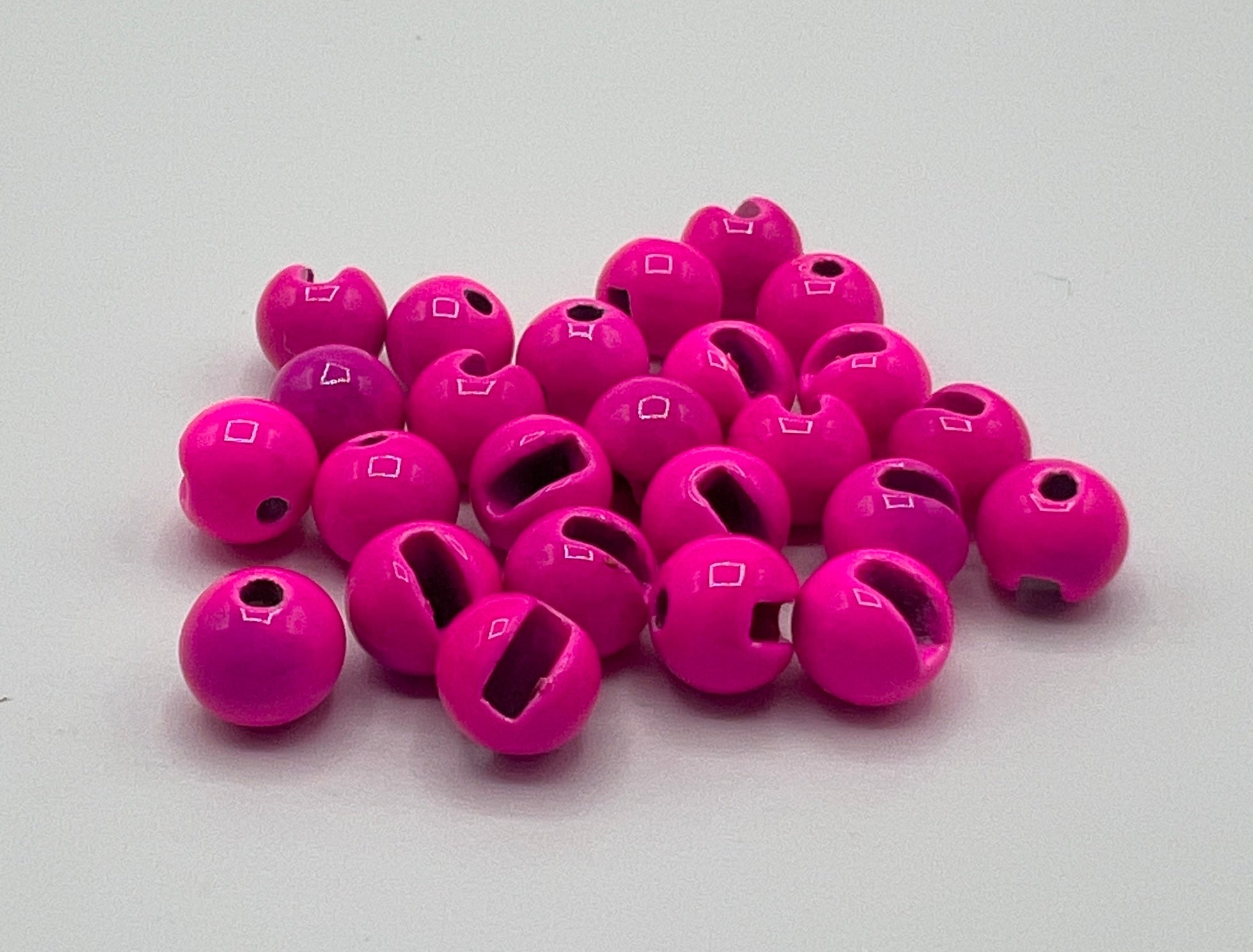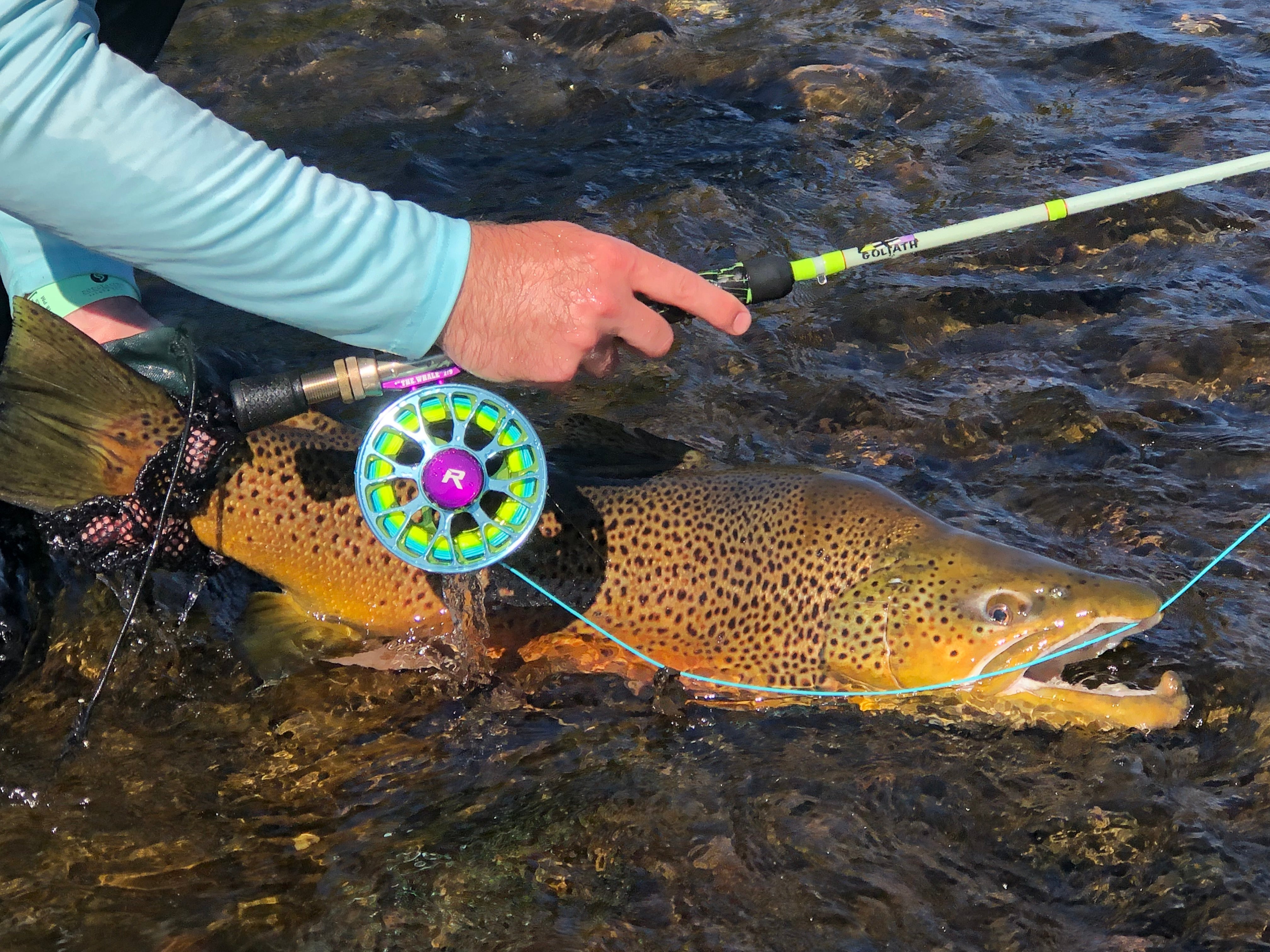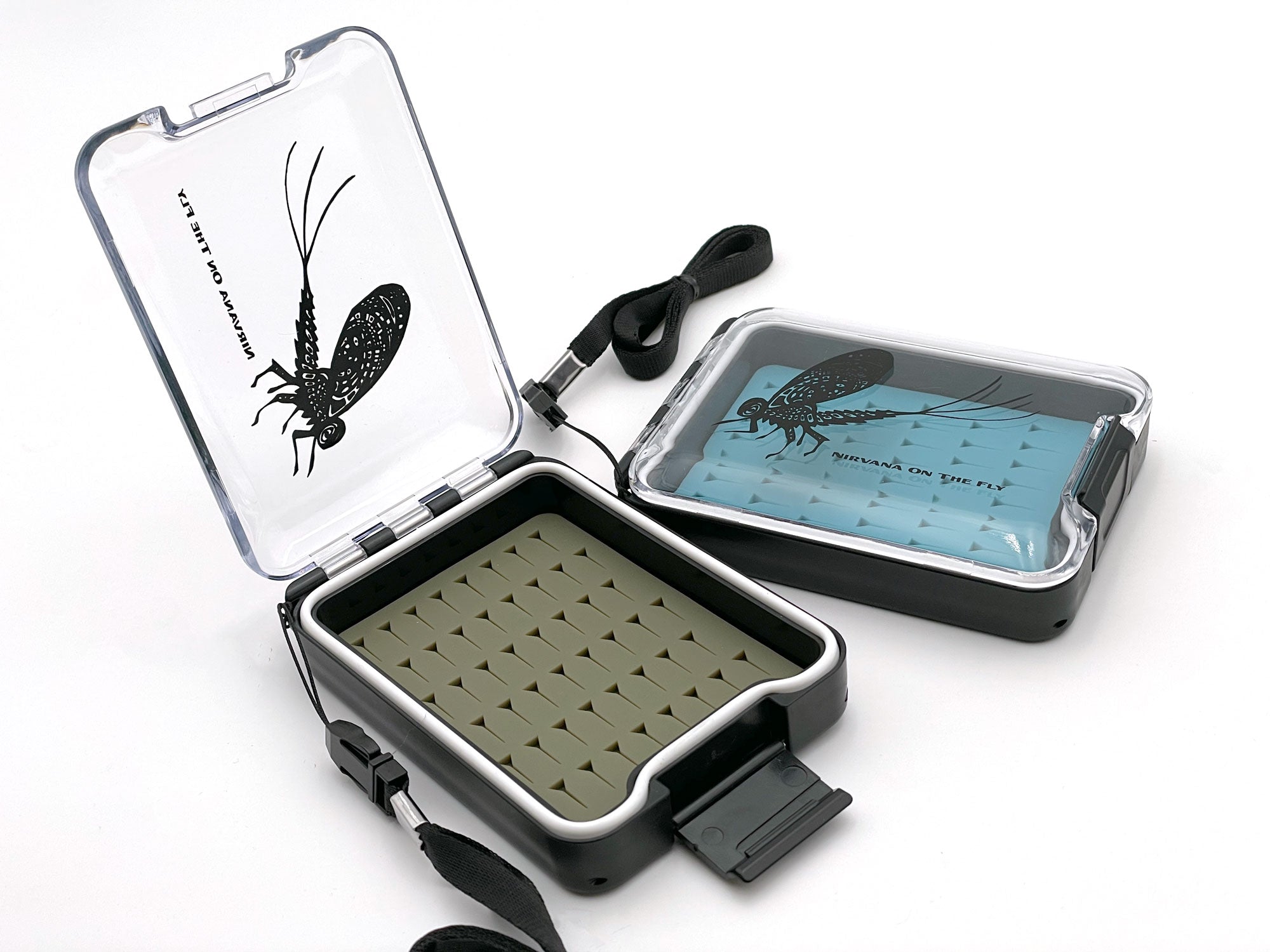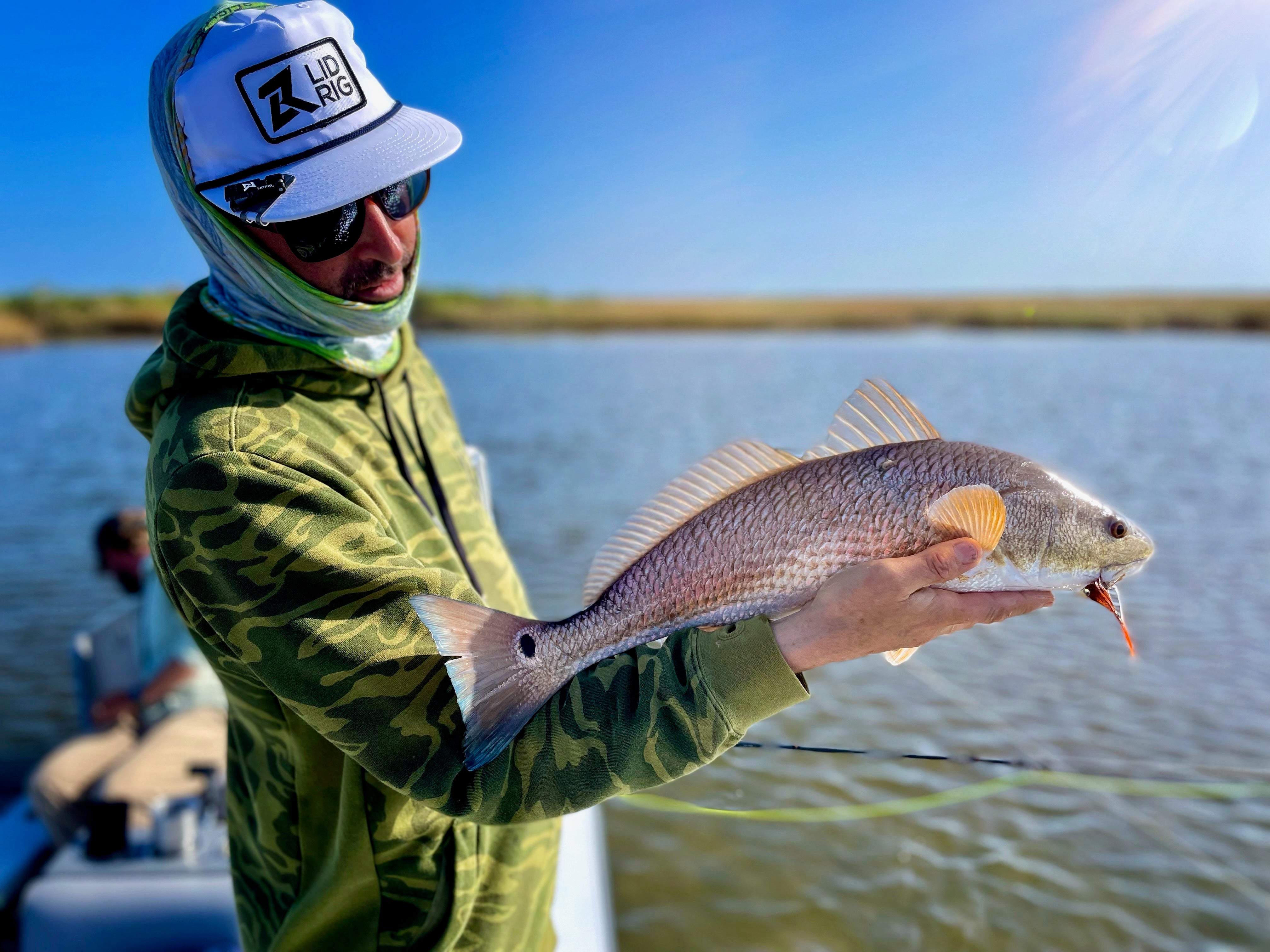Imagine a destination where the turquoise waters meet the sky, where the fish dance just beneath the surface, and where every moment is an opportunity for adventure. Welcome to San Pedro, Belize, a hidden gem for fly fishing enthusiasts and cultural explorers alike. Hidden in the chaos of vacation and guiding lodges is what I’ve found to be one of the most unique fly fishing in Belize outfits available to saltwater anglers. The Iguana House Belize is operated by the owners Chris and Mary Alice who tend to take you in under their wing and support you beyond your belief. The guided and DIY capabilities provided seriously go unmatched on the island and will keep you coming back for more.
The Iguana House Belize is unique in several ways. First and foremost the house is an original Belizian home that was barged to the island. That uniqueness alone provides the warmth of a home in a vacation setting which is extremely unique in San Pedro. Additionally, the position of the home is on a section of the island that has several miles of hikeable flats right outside your door. Arrive and fish! Literally, arrive and drive 10 minutes by golf cart to the house and lace up because you can fish miles of flats, hike docs, and often sight fish to Bonefish, Permit, etc. Not every place offers that. Most have a small dock and a possibility to see fish here and there but are not wadable and don’t offer those amazing flats. Want more? Then jump on a paddleboard or kayak and go just a bit further out than you can wade and you are casting into the reef where it is teaming with life and you have the ability to pick up jacks, barracuda, and so much more.
Let’s take a minute to learn a bit more about San Pedro and what I’ve experienced. In this article, I’ll guide you through the wonders of San Pedro, from the exhilarating experience of fly fishing in Belize to the rich cultural tapestry and delectable cuisine of Belize.

Fly Fishing in Belize - San Pedro
San Pedro, located on the stunning Ambergris Caye, is a fly fisher's dream. Renowned for its crystal-clear waters and abundant marine life, this location offers a one-of-a-kind fishing experience.
Key Species for Fly Fishing in Belize
Bonefish
The bonefish is a prized catch in the fly fishing world, especially in the shallow flats around San Pedro. Known for their elusive nature and lightning-fast speed, these fish provide a thrilling chase for anglers. They are generally found in shallow tropical waters, making sight casting a popular and effective technique. The best time to target bonefish is during the cooler months, from November to February when they frequent the flats in large numbers. Anglers should come equipped with small, light flies and be prepared for a stealthy approach to avoid spooking these skittish fish. You’ll have opportunities to target schooling bones, pods of 2-5, and singles. They are always there so if the day is hotter then focus on morning and evening hunts. During the day, you can also often see muds. These are areas where the water is a bit deeper and it shows murky like the sand on the bottom. That is bones feeding and digging, therefore muddying up the water. Blind casting into this will often lead to a few eats.
Tarpon
Tarpon is the giant of the flats and a favorite among fly fishing enthusiasts visiting San Pedro. Known for their impressive size — often weighing over 100 pounds — and acrobatic jumps, tarpon offers a challenging and rewarding experience. The prime time to fish for tarpon in San Pedro is from May to September, coinciding with their migratory patterns. Successful tarpon fishing requires strength, persistence, and durability, as these powerful fish are known for coming unbuttoned, their strength and stamina. Anglers often recount the exhilaration of the first jump, as tarpon are notorious for spectacular aerial displays. It’s like having a pitbull pissed off and on the end of your line. Make sure to have a bite leader if you are targeting them. You can build these on your own with a leader and heavy bite leader tippet. The knot to use is a slim beauty.
Permit
Catching a permit is often seen as the pinnacle of fly fishing achievements, and San Pedro's waters are a haven for these elusive fish. Permit are known for their wariness and discerning nature, making them a challenging catch. They are usually found in shallow, clear waters, often tailing as they feed on the bottom. The best months for permit fishing are typically April through September when the waters are calm and clear. Anglers targeting permit need a lot of patience and precision, often using crab-patterned flies to entice these picky eaters. The thrill of hooking a permit is unmatched, as it combines the need for precise casting, the right fly selection, and a bit of luck. Luck seems to be the most important. If you get shots at these fish there is a huge difference and that is why I sighted luck. My key is to put your permit rod in hand and dedicate it to fishing for them. Don’t get distracted by not catching, instead, stay motivated and wait for that opportunity then capitalize. Of all the fly fishing in Belize this is the one where boat teamwork comes into full effect and can yield significantly better results. Partners managing lines, watching for fish too, and all kinds of other tactics. It’s a full-on effort towards winning as a team.
Snook
Snook is another exciting species for fly fishers in San Pedro. These fish are known for their strong, powerful runs and are often found around mangroves and estuaries. Snook can be targeted year-round, but the best fishing is usually from late summer to early winter. They respond well to a variety of flies, including streamers and topwater patterns. Anglers should be prepared for a tough fight, as snook are known for their strength and agility. The experience of fishing for snook is enhanced by the beautiful, natural surroundings of the mangrove habitats where they are often found. You can find them cruising between mangroves along the shores but when you are by mangroves keep a close eye on them cruising and coming out of the roots. This is an adventure where you’ll often see both the snook and tarpon. I’ve found simple EP flies to be my best option. They are light and they mimic a ton of baitfish. The go-to for me is an EP that is black and purple. I keep several colors on hand because you can often switch flies and a miraculous eat will occur.
Each of these species presents a unique challenge and contributes to the rich tapestry of fly fishing in Belize and specifically the experiences available in San Pedro. Whether you are a seasoned angler or a beginner, the pursuit of these fish in the stunning Belizean waters is sure to be an unforgettable adventure.
Let’s talk Sargassum
Do you know what sargassum is and have you encountered it on a fishing trip or beach vacation?
What is Sargassum?
Sargassum is a genus of large brown seaweed (macroalgae) that floats in ocean currents and is found predominantly in the Sargasso Sea in the Atlantic Ocean. However, in recent years, it has become increasingly common in the Caribbean Sea, including the waters around Belize and Mexico.
This seaweed forms dense mats on the surface of the water. While it plays a crucial role in the marine ecosystem, providing habitat and food for a variety of marine life, its recent proliferation has posed significant challenges. For areas like Belize or Mexico that are not used to the rise in volume that they are now seeing.
Impact of Sargassum on Fly Fishing in Belize
Obstruction of Fishing Areas
Sargassum can accumulate in large quantities in coastal areas and on the surface of flats, which are key areas for fly fishing in Belize. This accumulation can make it difficult for anglers to spot fish, particularly species like bonefish, tarpon, and permit, which are popular targets in the fly fishing community. The thick mats of seaweed obscure the water's clarity, and more often entry points along the beach or docs make it difficult to get out into the clear waters.
The good news is that sargassum, although mats up and can make it difficult, it is really not an obstacle. In fact, sargassum often pulls fish in as they use it for cover and it provides you with another feeding and traveling zone to monitor. Additionally, once past its beachfront proliferation, you can easily avoid it and when fly fishing in Belize it is like it was never there anyway.
Interestingly, sargassum comes in fast and can leave just as quickly. Depending on the water temperature out in the big sea and the currents that are affected, sargassum moves. If a large current shifts it is common to turn your head and what feels like minutes later the problem no longer exists. The key is to move about your business and fish around it.
Interference with Fishing Gear
The presence of dense sargassum can cause interference with fishing gear. Fly lines and lures can become entangled in the seaweed, making casting and retrieving more challenging and less enjoyable for anglers. My advice is to just avoid it or fish up to the edge. It’s no different than fishing weedy trout or bass waters.
Should you catch a fish and it runs into sargassum then there are things you can do. Number one is to change your rod angle and get them out and away from the weed mats. Second, move your body away and look for open flats where you can move the fish and fight them freely. The difficulty with sargassum is that if your line cuts through it, it will likely gather around the line and put significant weight and pressure on it and can easily cause you to break off. Keeping clear is your best advice. When fighting and having an encounter I recommend turning your rod upside down, dipping your rod tip in the water, and changing the angle to move the fish. A similar technique to fighting tarpon and keeping them from rising. Turning your rod keeps your line out of the sargassum as it floats on top of the water. Once the fish is clear, turn your rod up again fight as you normally would, and land that trophy!
Impact on Fish Behavior
As mentioned, sargassum can affect the behavior and distribution of fish. While some species might use the seaweed mats for shelter or feeding, others might avoid areas heavily blanketed with sargassum. This behavior change can affect the patterns and habits of the fish, so use it as another point to gauge where you target. In the morning when it is cool, they may be there but when the water heats up and the mats get hot they may avoid that area. Watch to see what baitfish are doing and consider that.
Challenges for the Fishing Industry
The sargassum influx has broader implications for the fishing industry in Belize. It can deter tourists and anglers from visiting these destinations, leading to economic impacts on local communities that rely on tourism and recreational fishing. Additionally, the effort and cost of cleaning up the sargassum to maintain accessible and attractive fishing spots can be significant.
While sargassum plays an important ecological role, its recent overabundance has become a concern for when fly fishing in Belize and it's community. It obstructs fishing areas, interferes with gear, affects fish behavior, and poses economic challenges. Addressing the sargassum influx requires a balanced approach that considers both the ecological importance of these seaweed mats and the need to maintain healthy and accessible fishing environments.
This really can sound gloom and doom if you let it. Frankly, the negativity of sargassum is going to come out before anything else because it is new and perceived as a problem. Here is another way to look at it, from my perspective. Fewer vacationers, you usually avoid it when guided in a boat anyway, and when you DIY once past it you can be all alone. What I mean is, that when you hike out past it, it’s over. Go catch a fish on the flats and tell me if you even remember it being there. That, I highly doubt!
Have an interest in Sargassum? Here is another article that has a bit more detail for you.

Lodging Recommendation: The Iguana House Belize
For a comfortable and convenient stay, The Iguana House Belize offers excellent accommodations. Located near prime fishing spots, it's the perfect base for your fishing adventures.
The Iguana House Belize: Your Gateway to Exceptional Fly Fishing in Belize
Nestled in the heart of San Pedro's breathtaking landscape, The Iguana House Belize stands as an ideal retreat for both novice and experienced fly fishers. This charming lodging option not only provides comfortable and scenic accommodations but also serves as a hub for an array of fly fishing in Belize adventures.
Guided Fly Fishing in Belize
The Iguana House Belize excels in offering expertly guided fly fishing in Belize, tailored to the preferences and skill levels of its guests. These guided tours are led by seasoned local anglers who have an intimate knowledge of the best fishing spots around Ambergris Caye. Whether you're aiming to catch the elusive bonefish, the mighty tarpon, the challenging permit, or the dynamic snook, these guides know exactly where and when to take you for the best chances of success.
Iguana House Belize Specialties
- Personalized Experience: Each guided tour is personalized, ensuring that you're fishing in locations best suited to your interests and abilities.
- Local Knowledge: The guides, being local experts, provide invaluable insights into the behaviors and habitats of different fish species, increasing your chances of making a great catch.
- Equipment and Gear: For those who may not have their own gear, The Iguana House Belize can provide high-quality fishing equipment suitable for targeting the key species in the area.
DIY Fly Fishing in Belize
- For anglers who prefer a more independent experience, The Iguana House Belize supports DIY fly fishing in adventures. The location of the lodge itself is a significant advantage, as it provides easy access to some of the best fishing spots in the area.
- Proximity to Prime Locations: Situated near a variety of flats, estuaries, and mangroves, the lodge offers easy access to diverse fishing environments.
- Freedom to Explore: Guests have the freedom to explore at their own pace and make their own fishing adventure.
- Support and Advice: The staff at The Iguana House Belize are always ready to offer advice on local fishing spots, techniques, and the best times to head out for a fruitful day of fishing.
Want to be notified about when we write about special offers for amazing destinations like this?
Join the Fly Fishing Insider Loyalty Club!
Amenities and Comfort
- Beyond Fishing: The Iguana House Belize ensures a comfortable and enjoyable stay. The accommodations are designed to provide relaxation after a long day of fishing, with amenities that cater to the needs of anglers and vacationers alike.
- Comfortable Rooms: Well-appointed rooms with views of the stunning Belizean landscape offer a serene environment to relax.
- Local Cuisine: The lodge also provides an opportunity to indulge in local Belizean cuisine, offering a taste of the cultural richness of the area.
The Iguana House Belize isn’t just a place to stay, it's a gateway to the ultimate fly fishing in Belize. Whether you're looking for the expertise of guided tours or the freedom of DIY fishing, this lodge caters to all your needs. With its prime location, knowledgeable staff, and top-notch amenities, The Iguana House Belize promises an unforgettable fly fishing in Belize experience in the heart of San Pedro's natural beauty.
Beyond Fly Fishing in Belize: Exploring San Pedro Rich Culture and Cuisine
Local Cuisine
Belizean cuisine is a delightful blend of Caribbean, Mexican, and African influences. Don't miss out on the local delights:
- Rice and Beans: A staple, often served with chicken, pork, or seafood.
- Ceviche: A fresh and zesty seafood dish, perfect after a day of fishing. This is my favorite when you bring home a bi-catch that they prepare so you can eat your catch fresh from the water.
- Fry Jacks: A popular breakfast item, these fluffy fried breads are irresistible.
Cultural Experiences
San Pedro and the larger Belizean landscape are rich in cultural heritage. Don’t just get locked into fly fishing in Belize. Spend your late evenings exploring town or take a day off to go back to the mainland.
- Garifuna Culture: Experience the vibrant Garifuna culture, known for its drumming, dance, and unique traditions.
- Mayan Ruins: Explore ancient Mayan ruins like Altun Ha and Lamanai.
- Chicken Race: Perhaps go to the famous local chicken race.
- Snorkeling: Snorkel the reef, shipwrecks, or into the mangroves
- Water Caves: Go on a lazy river cave float and experience something extraordinary and unique!
For 10% off at the Iguana House Belize, tell them where you found out about them and the code FFIPodcast10
Weather and What to Pack for Fly Fishing in Belize
Belize enjoys a tropical climate. Pack light, breathable clothing, a good hat, sunscreen, and of course, your fishing gear. Expect occasional rain showers, so a waterproof jacket is advisable. Bring liquid bug repellent if there are bugs out at night, lots of sunscreen, and sun cover-ups.
Fly Fishing Gear

Here are my setups and recommendations for Belize. Because of the rich environment and quality of commonly targeted fish, you have a lot of options. You can take all or just on setup but go prepared for what you look to accomplish.
Rods and Lines
- Bonefish Rod - A 7 or 8-weight fast action rod with a floating line is ideal for bonefish. Small shrimp patterns, Gotchas, and things like that work very well. A 7 - 10 foot fluorocarbon tippet is perfect for targeting bones.
- Permit Rod - a 9 to 11 weight rod. I prefer a 9-weight rod personally. I am a smaller guy so having a rod that I can really flex and shoot line with gives me confidence. The key is to practice with that rod before you leave. Practice, practice, practice. I look at permit fishing as a control game. I can control how fast I can get the fly out and into the water. Accuracy comes next but it is harder because of wind and other conditions. What I can’t control is how far away they are, did I see them, would they eat. At least, my control is very limited. In other words, practice, practice, practice. Get your shots off with two backcasts at most, change directions, pick up and recast, and learn to cast in the wind. All of those practices will make a difference. For example, would you go onto a golf course without hitting a few practice balls? Not likely, especially if you plan on performing. Don’t do that to your $5,000 fly fishing in Belize trip and expect tremendous results. It’s a no-brainer.
- Predator Rod - My predator rod is set up for the big boys or other fish. For example, I can have it set up with a bite leader for tarpon or snook, or I change it out and put a cable leader on it and target barracuda or lemon shark. It’s my next rod up for opportunity in my opinion because I’m usually on a permit hunt or DIY bonefishing.
Tools
- Pliers - have a good set of pliers that have a quality cutter on them. You need this for building bite leaders, cutting tippets, and retrieving flies from crushers.
- Nippers - Nippers are great for tippet but when you get into heavier lines it can be frustrating so have pliers
- Stripping Basket - A stripping basket is nice to have but not a necessity. On windy days it can be quite nice. It can also keep your line off the water and allow you to throw a little further with your casts. Get a collapsable stripping basket and save a ton of hassle when traveling.
Flies

- Small Shrimp - Small shrimp patterns do really well in Belize
- Gotcha - this is my favorite pattern to use for bonefish and it works well for Permit in a pinch. Just be aware that you are on light tippet so fight gingerly!
- EP Flies - Black and purple EP flies work great for tarpon and snook. However, have a good mix of colors
- Crab Flies - White crabs are great all-around fly patterns. I like the Flexo crab patterns. Lighter colors are nice but a green here or there may work. I like how they sink fast but still have a little natural float to them. I weight them because I want them down quickly.
***When stripping these flies mimic how the real ones move. Crabs are slow floaters and stop for camouflage, shrimp shoot short and quickly then hide and baitfish swim away from predators.
Tippet

- Bonefish - 10lb - 16lb will do. I’m a lighter tippet guy personally.
- Permit - 16 - 20lb. I prefer a 16lb 18-24 inch tippet allowing me to turn over my fly.
- Tarpon - 20lb leader to a 40 - 75 lb bite leader. I’m usually in a 40-50lb bite leader for middle-aged tarpon in the weight range of 30-75 lbs. Anytime I’m targeting fish where I know I’ll be fighting fish that 75 lbs plus in size, I go heavier to 75 lb plus bite leader strength. Put on a piece that is 4-5 inches wider than what you expect the width of your target fish’s mouth. Bite leaders go on best with a Slim Beauty knot, which is also a common knot for tying tippet sizes or line sizes of different diameters.
- Snook - 20lb leader to a 30lb bite leader should get you through anything.
- Barracuda - 20 - 30lb leader to a cable bite leader of the same weight. The length of the leader is 4-5 inches wider than the expected width of the mouth. That keeps those sharp teach off the fluorocarbon. Cable leaders go on best with a Slim Beauty knot, which is also a common knot for tying tippet sizes or line sizes of different diameters.
Clothing and Gear for Fly Fishing in Belize
- Hooded long-sleeve shirts - Keep the sun off you
- Neck Gator - again, keeps the sun off you, soak it in water to cool down, etc.
- Shorts - Wade in them or be comfortable on the boat. However, be cognizant of your thighs and calves when it comes to sun.
- Lightweight Quick Drying Pants - I prefer light pants because it keeps me out of the sun. It also keeps my legs from getting scratched on coral, mangrove, etc.
- Rain Jacket - Storms come out of nowhere and a rain jacket can be a lifesaver. Going from 100 to cold wet wind can chill you off way too fast and you may not be right by the lodge.
- Longer Socks - I like longer socks for wading in shorts if I don’t want to get cut up. It makes wading shoes more comfortable and because I take them off in a boat, my feet are still covered from the sun but I have the dexterity to know if my line is underfoot.
- Wading Shoes or Boots - Don’t wade in bare feet. The locals do it but their feet are often callused and used to it. If you get a coral cut prepare for infection and potentially losing a foot.
- Polarized Sunglasses - A good pair of polarized glasses can make your trip. Blue lenses work best for me. Green is good as well. Any pair that you wear also tilt your head to the side and it will change the refraction of light. Your visibility will change. This is an old trick that will help!
- Waterproof Backpack - I like a waterproof backpack. I put a small number of flies for the day in a fly small fly box that will go in my pocket. Then the extra boxes go in my backpack. I also put a DSLR in my backpack and want it to be safe.
- Rod Holder - a rod holder is great for wading the flats. You can set it up for an extra rod, like when you want to carry a bonefish rod but have a permit rod ready. Otherwise, having a 3rd hand is nice for photos, releasing fish, walking the beach, and having a beer.
- First Aid - small first aid packs go a long way. Cutting your feet, hooking yourself, etc. This doesn't sound like much but if you have an accident and can address it pretty quickly it can dramatically decrease the likelihood of escalation.
- Rescue and Travel Insurance - Ask anyone and the go-to is Global Rescue. It's inexpensive, can cover all or a portion of your costs, and is an enormous peace-of-mind tool. Spending time, weeks in advance, natural disasters, etc. all leave open doors for unexpected change. Or perhaps you break an ankle jumping out of a panga. Getting insurance is something you don't regret, even if you use it.
****Ohhh yaaa BEER! Stick 1 or 2 in your bag you’ll thank me for it! Cans are best when fly fishing in Belize!
Know Your Knots
- Rapala Knot - This is your number one knot to connect all your flies. Get proficient at it so you can put a fly on quickly, in the dark, under a rock, on top of a roof, and under pressure. Dr. Suess is your mentor!
- Slim Beauty - Have to connect two lines of different sizes or materials? Then this is the knot. Again, know it well.
- Clinch Knot - This is my fast go-to knot if I need to change flies or can’t remember something. It’s so easy and can be easily tied on quickly with hemostats or pliers
- Yukatan Knot - Another great knot for connecting braided line to mono. This one is fantastic for when you want to put the fly rod down and huck a spinning rod at some distant cuda or something for the fun of it.
Like I said, San Pedro, Belize, is more than a fly fishing in Belize paradise; it's a window into a vibrant world of natural beauty, rich culture, and culinary delights. Whether you're battling a tarpon at the end of your line or exploring the local markets, San Pedro offers an unforgettable adventure. Book your stay at The Iguana House Belize, pack your bags, and get ready for an experience that will leave you with memories to last a lifetime.
For 10% off at the Iguana House Belize, tell them where you found out about them and the code FFIPodcast10

By Christian Bacasa
Host of the Fly Fishing Insider Podcast
www.ffipodcast.com
@flyfishinginsiderpodcast
@dupeafish



